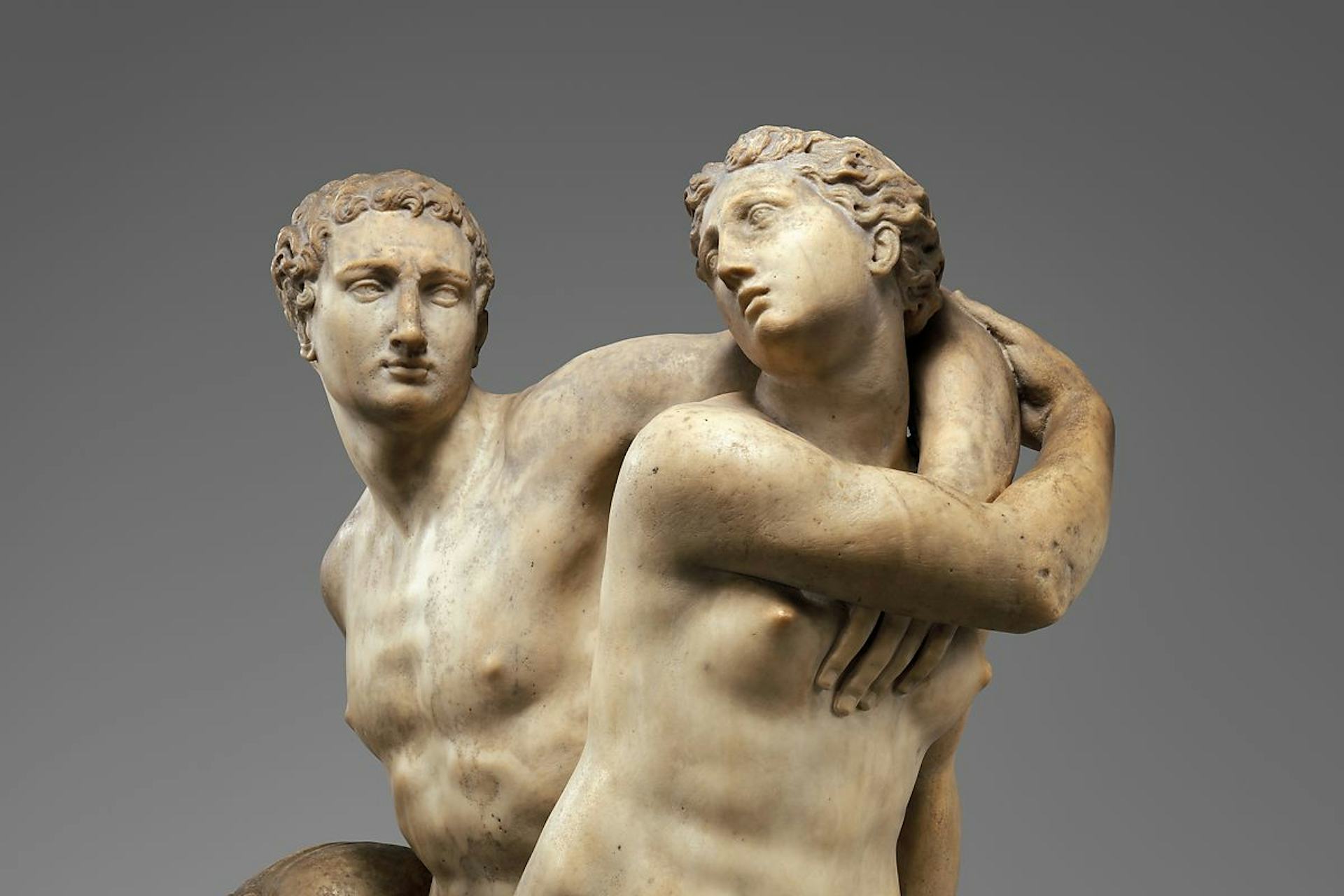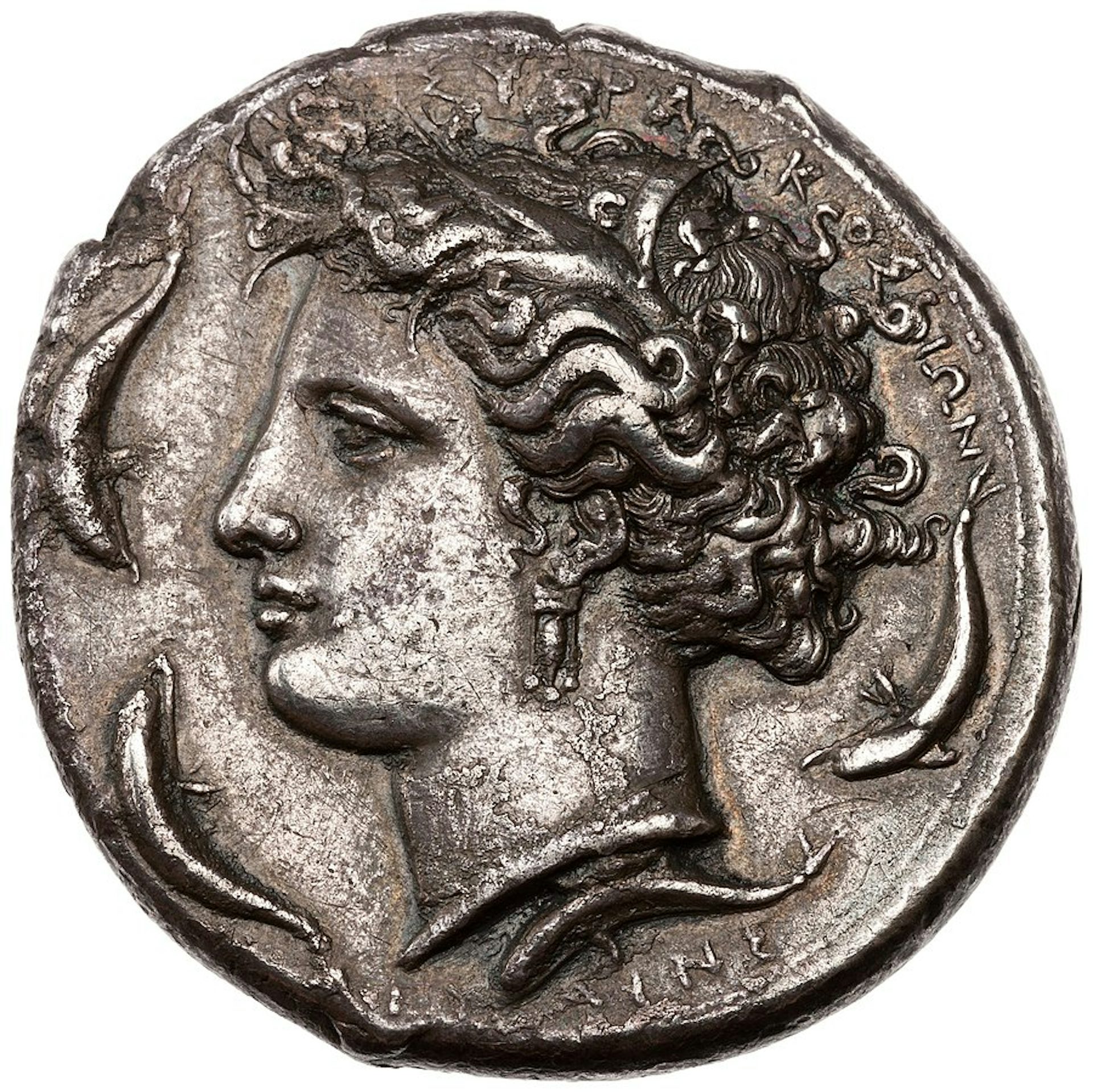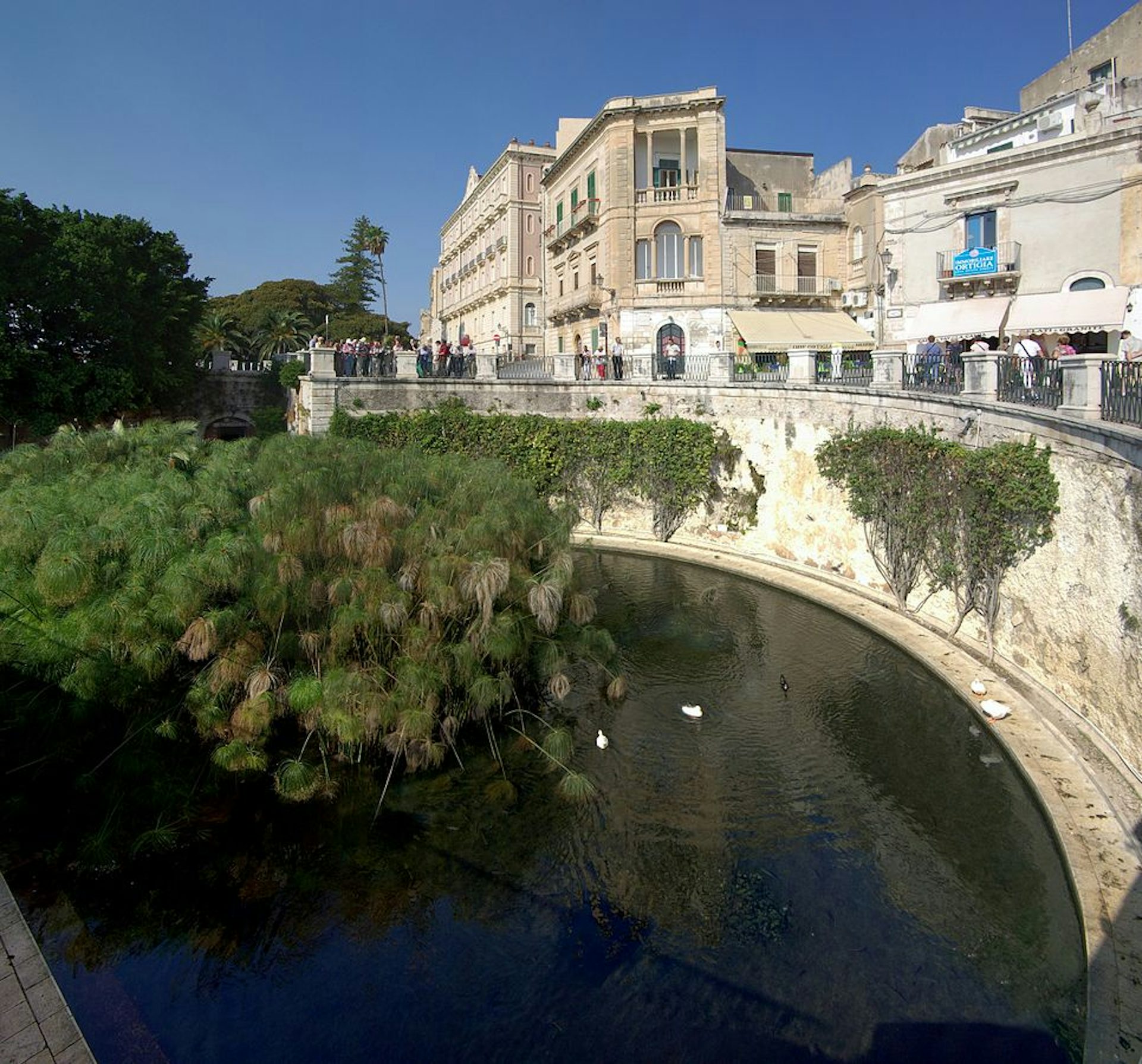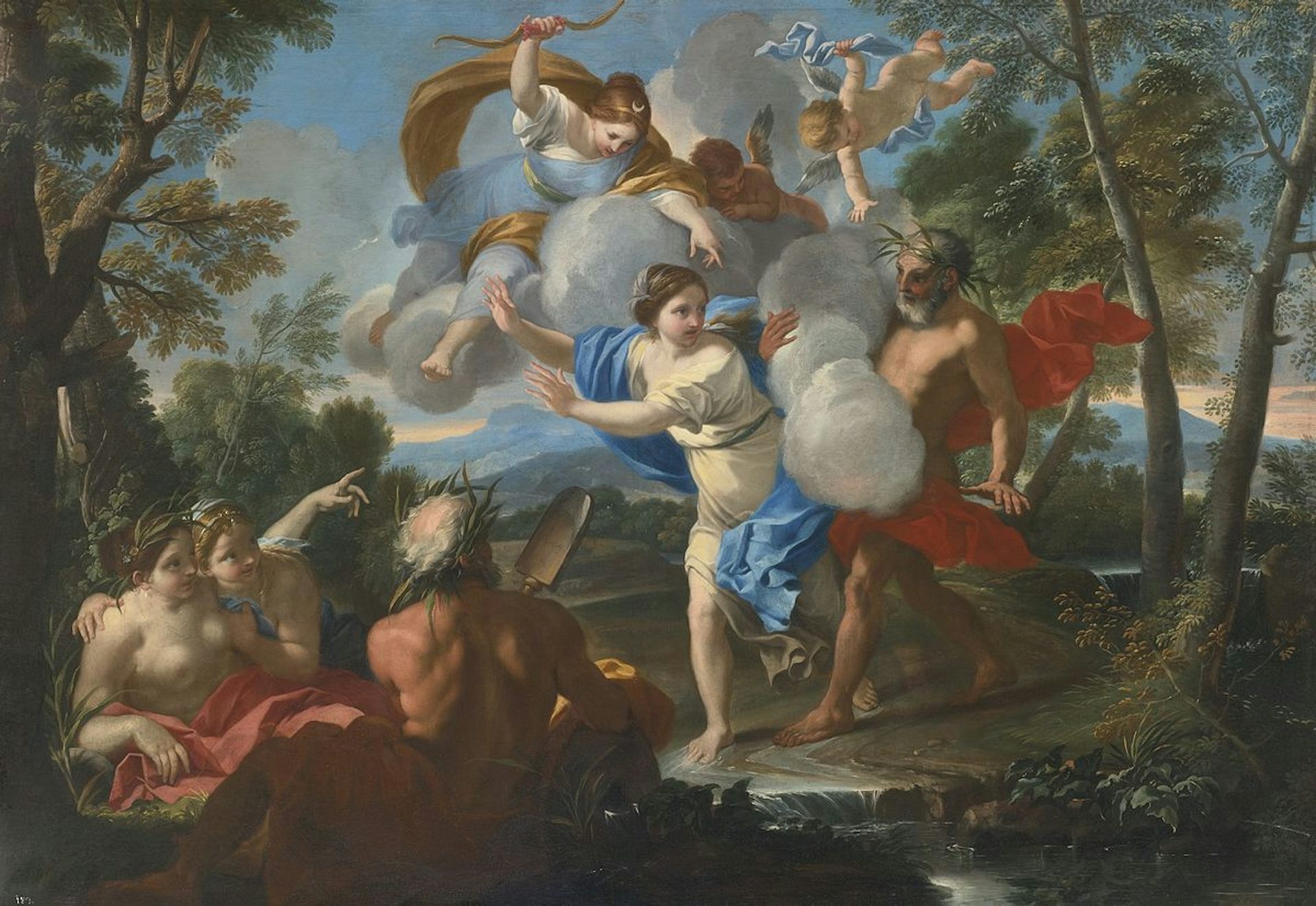Arethusa

Alpheus and Arethusa by Battista di Domenico Lorenzi (1568–1570).
The Metropolitan Museum of ArtPublic DomainOverview
Arethusa, sometimes called a daughter of Nereus and Doris, was a beautiful nymph and the namesake of a famous freshwater spring in the port of Syracuse. She was loved by the river god Alpheus, who chased her across the sea from Peloponnese to the island of Ortygia near Sicily. Desperate to escape, Arethusa was turned into a spring. Alpheus, undaunted, flowed under the island and mingled his waters with Arethusa’s.
The spring of Arethusa was said to be in the port of Syracuse, the most important city in Sicily. Arethusa was highly revered by the Syracuseans, who put her face on their coinage.
Etymology
Etymologically, the name “Arethusa (Greek Ἀρέθουσα, translit. Aréthousa) seems to be derived from the Greek verb θέω (théō), meaning “to run, hurry.” Compare the names of several other Greek mythical figures, including Pirithous, Thoas, and Thoosa.
Pronunciation
English
Greek
Arethusa Ἀρέθουσα (Aréthousa) Phonetic
IPA
[ar-uh-THOO-zuh] /ˌær əˈθu zə/
Attributes
Arethusa was a nymph but also the freshwater spring in Syracuse to which the nymph gave her name. The chief attribute of the nymph Arethusa seems to have been her beauty—an attribute she shared with all nymphs.

Silver decadrachm showing the head of Arethusa surrounded by leaping dolphins. Minted in Syracuse, Sicily (405–400 BCE).
American Numismatic SocietyPublic DomainAs for the spring Arethusa, it was located near the port of Syracuse, the most powerful and important city in the island of Sicily. The most interesting thing about this spring was that, in antiquity, it was believed that its water was supplied by the River Alpheus. The Alpheus was a river in the region of Arcadia in the Greek Peloponnese, and thus separated from Sicily and Syracuse by some 400 nautical miles of the Ionian Sea! The popular folk belief was that the Alpheus flowed under the sea and to supply water for the spring of Arethusa. The supposed proof was that a wooden cup thrown into the Alpheus would resurface in the spring Arethusa and that the blood that flowed into the Alpheus from the sacrifices at nearby Olympia would discolor the Arethusa’s water.[1]
As the nymph of one of their most important sources of water supply, Arethusa was highly revered by the people of Syracuse. The spring teemed with fish which were considered sacred and could not be touched or eaten;[2] one author mentions a sacred eel.[3] Arethusa herself was sometimes identified with Artemis, the Olympian goddess of the wild.[4]
In ancient art, Arethusa was most familiar from Syracusean coins, which often displayed her head ringed by a circle of leaping dolphins. These remain some of the most famous coins known from antiquity. Arethusa was sometimes, but rarely, represented in other visual arts such as vase paintings and mosaics.[5]

The Spring of Arethusa in Syracuse, Sicily.
Berthold WernerCC BY-SA 3.0Family
Arethusa’s genealogy is obscure. A late source makes Arethusa one of the fifty Nereids, daughters of the sea gods Nereus and Doris.[6] But Arethusa was not included in more standard catalogues of the Nereids, and most sources for her mythology call her a nymph without saying who her parents were.[7]
In one tradition, Arethusa was a lover of Poseidon and the mother by him of Abas, ancestor of the Abantes tribe of Euboea.[8]
Mythology
Origins
Surviving sources for Arethusa’s myth tell us little about her origins. Hyginus’ Fabulae, a Latin mythographical text, made Arethusa one of the Nereids, but Hyginus often reported idiosyncratic genealogies that differed from more standard accounts.[9]
According to Ovid’s Metamorphoses, on the other hand, Arethusa originally came from the town of Pisa in Elis, in the eastern Peloponnese.[10] Since Arethusa’s mythology connects her with the Peloponnese and the Peloponnesian river Alpheus, it is likely safe to assume that Ovid was representing what was the most familiar tradition.
One lesser known, historicizing variation of the myth had it that Arethusa as well as her would-be lover Alpheus were hunters, not gods.[11]
Arethusa and Alpheus
Arethusa’s myth tells of how she caught the eye of the River Alpheus. Alpheus, like other Greek river gods, was characteristically aggressive: he tried to take Arethusa by force. Arethusa fled across the sea, to Ortygia, a tiny island off the coast of the larger island of Sicily. But Alpheus followed her. In a final, desperate attempt to escape, Arethusa turned into a spring (the sources are vague about how exactly she accomplished this).[12]

Alpheus and Arethusa, attributed to Luigi Garzi (17th or 18th century).
Wikimedia CommonsPublic DomainBut in the most famous tradition, Alpheus was not to be kept away so easily. He found an underground passage and flowed into the spring that Arethusa had become, mingling his waters with hers.[13]
Arethusa and Demeter
Arethusa makes an appearance In Ovid’s account of the myth of Demeter’s search for her abducted daughter Persephone. After Persephone had vanished while playing on the island of Sicily, writes Ovid, Demeter searched high and low for her. During her search, however, she neglected her duties as goddess of agriculture and as a result no crops grew.
Eventually, Demeter’s search took her to Arethusa’s spring. There, Arethusa revealed to Demeter at last what had happened to Persephone: as Arethusa flowed underneath the earth, she had seen Persephone in the Underworld, where Hades had taken her to be his queen. With this information, Demeter was finally able to reunite with her daughter. In return, Arethusa asked only that Demeter take pity on the earth and let the crops grow again.[14]
Pop Culture
Despite her rather spare mythology, Arethusa was quite popular in the arts of the west. Most recently, she has inspired musical scores by the Polish composer Karol Szymanowski, the English composer Benjamin Britten, and the American Indie band The Decemberists.